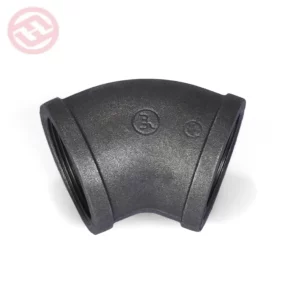To prevent deformation of American pipe fittings and preserve their dimensions during storage and handling, it is essential to follow recommended practices that minimize the risk of physical damage. Proper storage and handling procedures contribute to maintaining the integrity of the fittings and ensure that they meet specified dimensions.
Here are recommended practices:
- Dry and Covered Storage:
- Store American pipe fittings in a dry and covered environment to protect them from moisture, humidity, and direct exposure to the elements. Moisture can lead to corrosion, affecting the dimensions and structural integrity of the fittings.
- Avoid Direct Sunlight:
- Store fittings away from direct sunlight to prevent exposure to UV radiation. Prolonged exposure to sunlight can cause material degradation and potential changes in dimensions over time.
- Temperature Control:
- Maintain a controlled storage temperature. Extreme temperature variations can affect the material properties of the fittings, leading to expansion or contraction. Avoid storing fittings in areas prone to temperature extremes.
- Use Protective Covers:
- Use protective covers or wraps to shield fittings from dust, dirt, and potential impacts. This helps prevent scratches, dents, or other forms of physical damage that could alter the dimensions of the fittings.
- Stacking Guidelines:
- Follow recommended stacking guidelines to prevent deformation due to excessive weight. Avoid stacking fittings too high or in a manner that could lead to distortion. Use appropriate pallets or racks to support the weight evenly.
- Avoid Pileups and Pile-Ons:
- Do not pile fittings on top of each other without proper support. Pileups can cause deformation and lead to irregularities in the dimensions of the fittings. Use pallets or racks to maintain organized storage.
- Handling with Care:
- Handle fittings with care during transportation and storage.american pipe fittings Avoid dropping or mishandling fittings, as impacts can result in deformations. Use proper lifting equipment and techniques to prevent damage.
- Separate Different Materials:
- If storing fittings made from different materials, keep them separated to avoid galvanic corrosion or other reactions that could alter dimensions. Follow manufacturer recommendations for storing specific materials.
- Regular Inspections:
- Conduct regular inspections of stored fittings to identify any signs of damage or deformation. Promptly address any issues to prevent further deterioration.
- Follow Manufacturer Guidelines:
- Adhere to the manufacturer’s guidelines for storage and handling. Manufacturers often provide specific recommendations to ensure the longevity and dimensional stability of their products.
- Labeling and Documentation:
- Label fittings appropriately and maintain documentation that includes information on dimensions, material specifications, and storage requirements. This helps in identifying and handling fittings correctly.
- Storage Duration:
- Avoid storing fittings for extended periods without periodic checks. If fittings are stored for a long duration, consider rotating stock to use older inventory first and regularly inspecting the condition of stored fittings.
- Avoid Mixing Sizes:
- Keep fittings of different sizes separated. Mixing fittings of various dimensions in storage can lead to confusion and increase the risk of using the wrong size in installations.
- Training and Awareness:
- Train personnel involved in handling and storage on proper procedures and the importance of preserving fitting dimensions. Create awareness about the impact of mishandling on product integrity.
By following these recommended practices, manufacturers, distributors, and end-users can minimize the risk of deformation, corrosion, and other factors that may affect the dimensions of American pipe fittings during storage and handling. This, in turn, ensures that the fittings meet the specified standards and perform effectively in applications.
